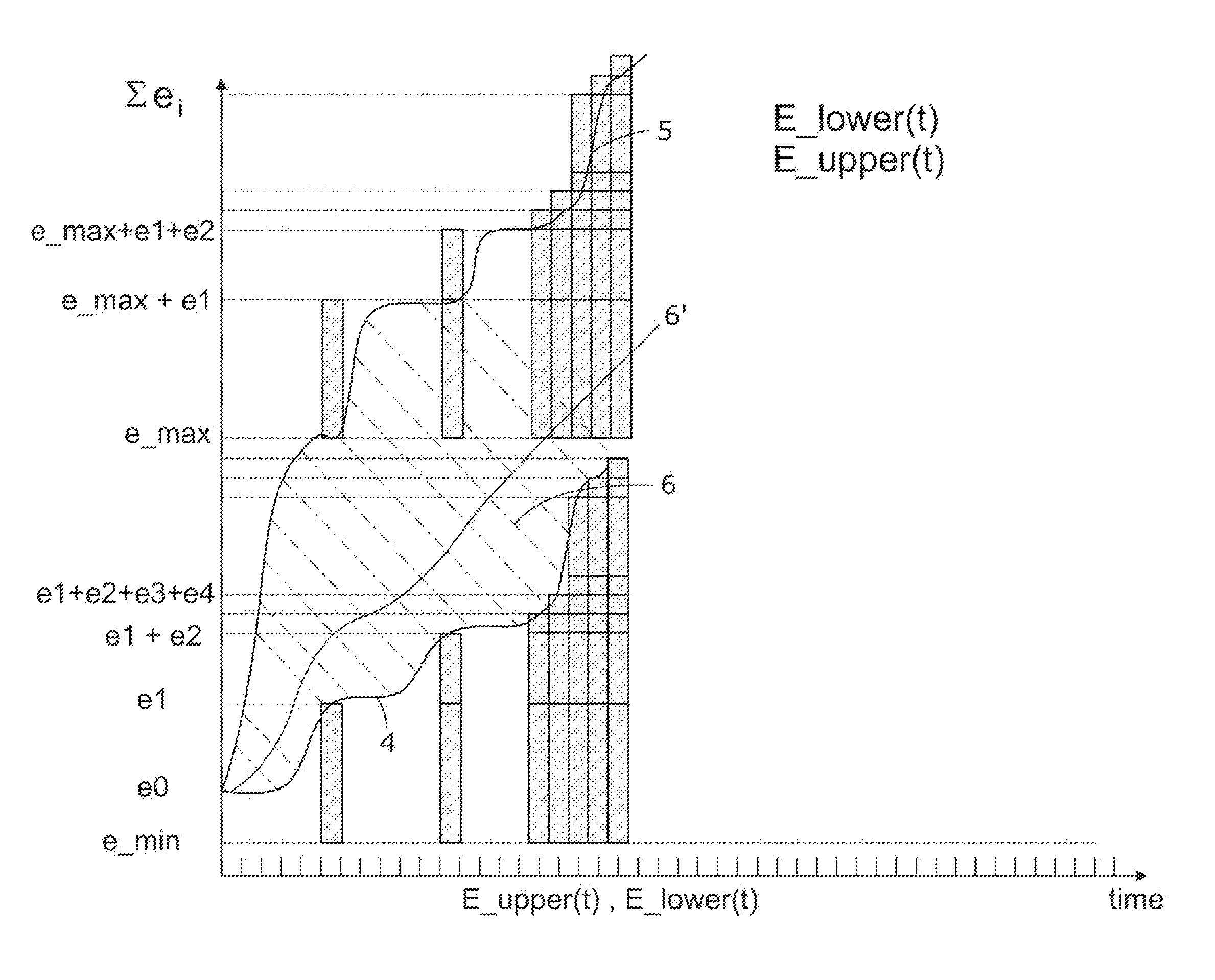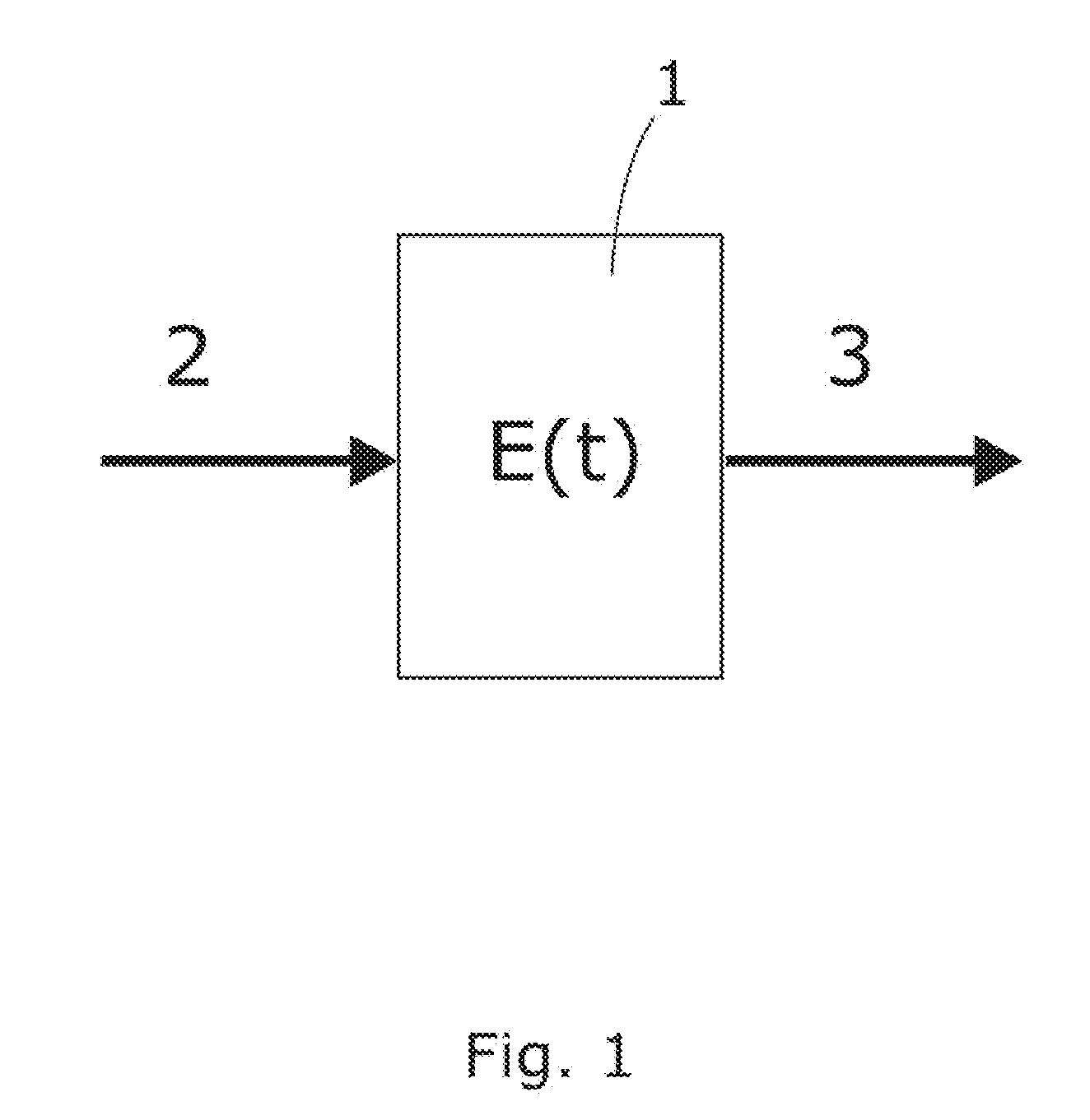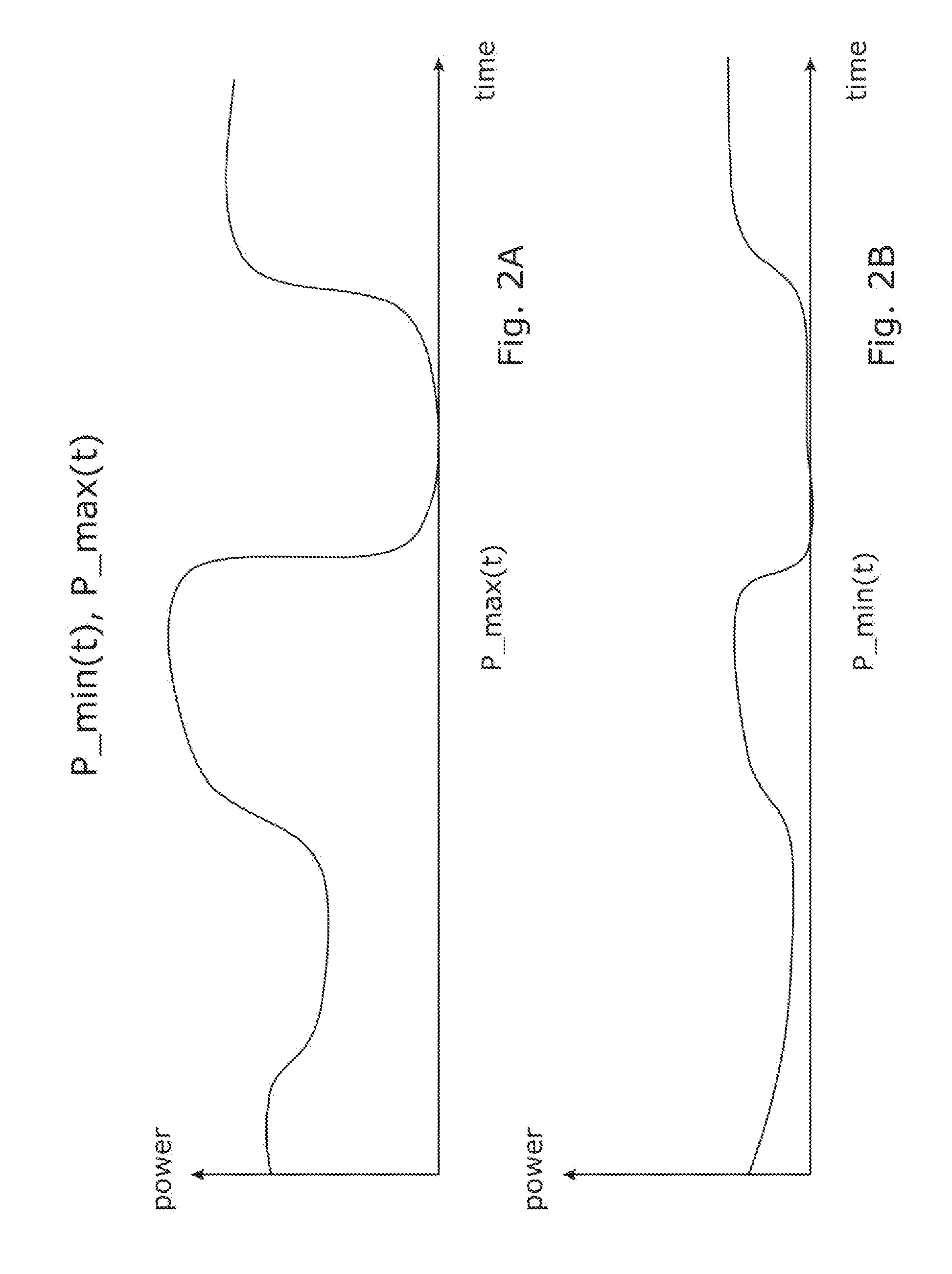Energy Allocation System
- Summary
- Abstract
- Description
- Claims
- Application Information
AI Technical Summary
Benefits of technology
Problems solved by technology
Method used
Image
Examples
Embodiment Construction
[0023]Within the description, the same reference numbers or signs are used to denote the same parts or the like.
[0024]Reference is now made to FIG. 1, which schematically illustrates the principle of a device model in an embodiment of the present invention. The device is preferably an energy storage / buffering device 1 and may, for example, be the battery of an electric vehicle or a hot-water boiler. Generally, in an embodiment of the present invention, the energy storage device 1 may be a device capable of feeding power back into the power grid and, indeed, also a device where there is no direct link between when the power is being consumed by the device and when the energy is supplied thereto. The energy E(t) in the energy storage device 1 is measured from the difference of the energy inflow, which is the energy provided to the energy storage device 1 in a given time window, and the energy outflow, which is the energy consumed by the energy storage device 1 in a given time-period. ...
PUM
 Login to View More
Login to View More Abstract
Description
Claims
Application Information
 Login to View More
Login to View More - R&D
- Intellectual Property
- Life Sciences
- Materials
- Tech Scout
- Unparalleled Data Quality
- Higher Quality Content
- 60% Fewer Hallucinations
Browse by: Latest US Patents, China's latest patents, Technical Efficacy Thesaurus, Application Domain, Technology Topic, Popular Technical Reports.
© 2025 PatSnap. All rights reserved.Legal|Privacy policy|Modern Slavery Act Transparency Statement|Sitemap|About US| Contact US: help@patsnap.com



